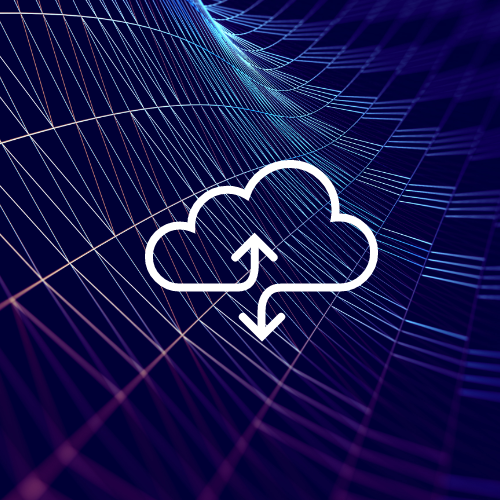A common misconception exists among organizations using SaaS applications like Microsoft 365 or Salesforce that the data created within-platform is protected, and backed up, by the application. However, without a comprehensive strategy leveraging a third-party data protection solution, you run the risk of the following:
- Exposing your organization to data loss, including breaches or internal attacks
- Increasing costs for managing data
- Delaying cloud benefits
- Incurring compliance or audit penalties
A strong third-party data protection solution enables your organization to overcome these challenges by following best practices, supporting new cloud workloads and initiatives. Your team will then be able to focus resources on higher-value functions, deliver on SLAs, avoid unexpected costs, reduce data risk, and stay compliant with industry standards.
Native SaaS apps data protection — what’s missing?
Native retention capabilities are not intended to make all versions of your data available whenever needed. This is because these platforms are not designed for the long-term, policy-based data retention required by industries today. Those cloud services that do, in fact, offer SaaS apps backup may charge substantial fees for the retrieval of any customer data. As a result, organizations often find themselves turning to the Recycle Bin as a “backup solution” — not a reasonable approach.
The benefits of third-party protection and backup
Below, we’ll explore in detail the key reasons why third-party cloud data protection is the logical choice for business-critical SaaS application data, and provides numerous benefits.
Data recovery and file sharing
Microsoft, Google, and Salesforce do, in fact, offer limited cloud-based data storage capabilities — and enable recovery so long as it takes place within a brief window following deletion. However, these native restore options have several limitations and do not always guarantee full recovery of your data in the event of a breach or accidental deletion. Remember, SaaS applications are designed for productivity, not restoration. Those offering backup capabilities may charge considerable fees for data retrieval. Once a data loss event takes place, there is little a system administrator can do to recover it.
Because SaaS applications utilize cloud-based file-sync there is a common misconception that this data is protected. While file-sharing and data-protection technologies have some overlapping features, they are fundamentally different in their approaches. File sharing is built for real-time collaboration between users, not data recovery. It also does not address archiving, compliance, or eDiscovery challenges. With enterprise backup, user data is automatically copied, stored, and protected for accessibility, and a quick and easy recovery should corruption or loss take place.
The growing threat of ransomware
Most SaaS-enabled organizations don’t realize that these platforms are equally at risk for data loss as legacy systems. With ransomware looming as a threat to all organizations and industries, companies are quickly finding themselves grossly underprepared for their potential response to an attack.
To ensure backup data is kept inaccessible to potential threats, organizations today must choose a third-party data protection solution with unmodifiable backups, deletion prevention, and malware resistant architecture. Implementing zero-trust access policies also helps bolster one’s defense strategy. Rapid detection and automated response reduce infection spread and improve time to recovery. A strong solution also provides the ability to scan snapshots following an attack and prior to restoration, further reducing the chance of reinfection.
Security, compliance, and legal obligations
Businesses can face serious, costly penalties if they are unable to produce data stored in SaaS platforms during litigation or a discovery request. Discovery requires legal teams have immediate access to potentially pertinent user data. Previously, this data would have resided in the file cabinet; now, it’s located on the devices of employees. While living in cloud services like Microsoft 365, data may not be recoverable with native application backup. Or, equally worrisome, it may be unprotected throughout the litigation process and susceptible to deletion or mishandling.
In addition, a top concern of any IT team is the risk of losing sensitive or confidential data. Privacy laws change regularly, and the passage of recent legislation such as GDPR demonstrate an increasing need for data visibility beyond what most organizations had in place at the time, requiring a drastic change in how user data is captured or stored.
An effective third-party data protection solution offers unified eDiscovery for multiple data sources such as Microsoft or Google Workspace. It should provide central visibility and federated data search across data collection sets, allowing users to easily place legal holds to resolve cases quickly and efficiently. The automated backup of user data, when combined with protection from mishandling or malicious actions, keeps the data readily and simply accessible for legal teams.
Simple, secure backup and protection for your SaaS data
As detailed in this article, the ideal third-party solution addresses an organization’s SaaS application data protection challenges. Druva helps some of the world’s largest organizations protect their investment in Microsoft 365, Google Workspace, Salesforce, and others, from data loss and compliance violations.
Druva provides a cloud-based data protection service, ranging from backup/recovery to cyber resilience. All-inclusive services eliminate the need to manage hardware, software, and associated cost and complexity. As a result, Druva delivers the following key benefits:
- Unique cloud architecture and expertise
- Backup and recovery ensuring clean data is always available
- Air-gapped, highly available backup environment with the highest level of security
- Management via a simple, unified interface
- A transparent business model with predictable, controllable costs
- On-demand data protection to scale up and down for improved business agility
Download the SaaS apps data protection handbook for a closer look at how Druva addresses key data protection challenges, including an in-depth exploration of those unique to Microsoft 365, Google Workspace, and Salesforce.
